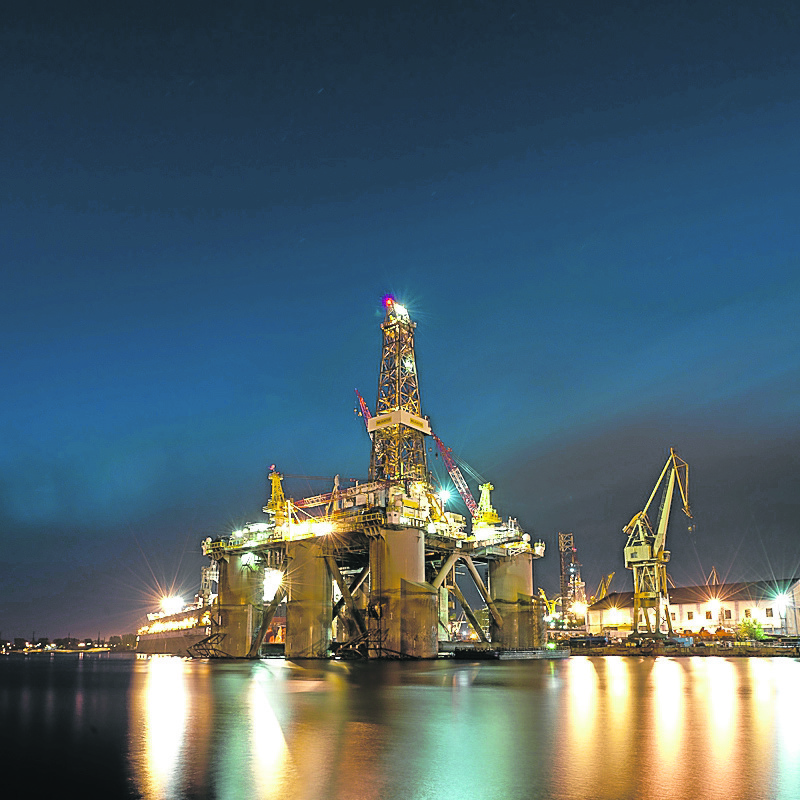
Westwood Global Energy reports that in the UK in December there was just one new well spud in the Central North Sea, whilst operations on four wells were completed. 2017 saw a total of 23 E&A wells* completed. At the end of December, just one exploration well was active on the UKCS.
West of Shetland
It is understood that BP abandoned operations on exploration Well 206/9b-5 in early December, the well having targeted the Cretaceous Achmelvich Prospect, close to the Clair Field, with the Paul B Loyd Junior (SS). Meanwhile, Nexen has also abandoned its long-running and deep Craster exploration Well 205/15-1 with the West Phoenix (SS), to the west of Clair, where it evaluated prospectivity in the Mesozoic. The well had a duration of around six months, having spudded on May 29. Results from both wells have yet to be announced.
Northern North Sea
In the Northern North Sea, Apache has now abandoned its Titan exploration well, 9/14b-16. Operations on the well overran due to weather-related delays. The well targeted Eocene sand injectites to the east of the Beryl Field, however a result has yet to be announced. The rig, WilPhoenix (SS), moved to drill the operator’s Val d’Isere exploration well, close to the Forties Field.
Central North Sea
The final E&A well of 2017 to start drilling commenced on December 21, and is targeting the Upper Jurassic Val d’Isere Prospect with the WilPhoenix (SS), immediately north of the Forties Field. Well 21/10b-11 is targeting pre-drill resources in the region of 32 mmboe, according to operator Apache.
Southern North Sea
Wintershall has abandoned its Carboniferous Winchelsea appraisal well, after a longer than anticipated single-well drilling programme. The well spudded on July 6, and whilst a result has yet to be announced, Westwood understands that the well was successful in proving gas. The rig, Maersk Resolve (JU), subsequently moved the short distance to the Dutch sector.
*23 wells completed excludes the Glengorm exploration well in the Central North Sea, which failed to reach reservoir and will be re-drilled.
Westwood Global Energy reports there was one well completion and five E&A spuds on the Norwegian Continental Shelf in December. In total, 27 E&A wells were completed in 2017. Well 15/6-14 S was completed in December after only six days of operating following the spud date and without a result being reported. There were therefore four active wells drilling at the end of the year. The briefness of operations at Well 15/6-14 S is likely to be a result of mechanical issues, which will require another well to be drilled in 2018.
North Sea
Statoil spud three wells in December, all in the North Sea, starting with the appraisal Well 30/8-5 targeting the Tune Statfjord Field on December 3, 2017, utilising the Deepsea Atlantic (SS). On December 20, Statoil then spud exploration Well 15/6-14 S targeting between 8 and 21mmboe at the Gina Krog Central III Prospect. This well was plugged and abandoned without a result by the Maersk Interceptor (JU) on December 26. On December 25 Statoil spudded its last well of 2017, targeting the Tethys Prospect with Well 35/9-13, using the Songa Enabler (SS). Aker BP spudded the 24/9-12 S well on December 29, 2017 with the Transocean Arctic, targeting the Palaeocene Frosk Prospect located between the Volund and Boyla fields.
Norwegian Sea
Since OMV spudded Well 6506/11-10 on November 28, with the Deepsea Bergen (SS), targeting the Hades and Iris prospects, there has been no additional activity in the Norwegian Sea. The prospects are located to the northwest of the Morvin and Åsgard fields and are of Lower Cretaceous and Middle Jurassic age respectively. The Norwegian Sea has provided the most discovered commercial resources for 2017 in Norway, despite a drilling level of only eight wells, which is half of the average level for the past five years.
Barents Sea
On November 3, Lundin spudded Well 7219/12-3 S targeting the Hurri Prospect, with the Leiv Eiriksson (SS), having made the non-commercial 7219/12-2 Hufsa gas discovery 5km to the south east. With six non-commercial discoveries and four dry wells drilled in the Barents Sea in 2017, Lundin will hope it can start 2018 with positive news for the Barents Sea with this well.
Recommended for you
